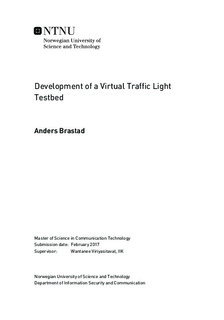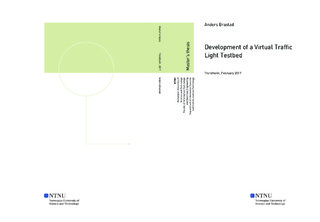| dc.description.abstract | Today we are facing many challenges within our systems of transport and traffic. The world of transportation is huge, and the problems are often difficult to resolve. Intelligent transport systems (ITS) and services are the future solutions for today's transportation problems. For the years to come the evolution of ITS will become more important than ever before. Virtual Traffic Light (VTL) is a self-organising traffic control concept proposed to manage traffic at intersections for use in ITS. This VTL concept is enabled by the design of local rules which allow vehicles approaching an intersection to resolve the ensuing conflict in a seamless and self-organising manner. Through the use of vehicle-to-vehicle communication, the VTL protocol can dynamically optimise traffic flow at intersections without the need for any roadside infrastructure.
While the VTL has been extensively studied (in terms of technical and business perspectives), the real testbeds for VTL has, to the author's knowledge not been adequately explored. This project thus aims to fill this gap by using Diddyborg robot cars powered by Raspberry Pi 3 computers. We present a design and implementation or a functional VTL testbed which is used to determine the effectiveness and feasibility of the VTL concept. Simulation done with the VTL testbed show promising results. | |

